As the Lead Designer at Imaginary Cloud, I conduct most of the interviews for design positions. While interviewing a design candidate, I frequently ask about their preferred books on the subject of UI/UX or product design. Sadly often, they answer: Don't Make Me Think or Design of Everyday Things.
That’s the moment I know that my interlocutor knows very (very!) little about product design. Why is that? Well, don’t get me wrong. It is not that those books are bad. They were landmarks, in their time. In a time when there was very little acknowledgment about the importance and the role of design, when design was mainly done by developers and with very little user awareness. Those books were an important step forward. They laid down the first basic standards and foundational best practices. But this was around 20 years ago! 20 years! (And yes, these books were updated and re-edited, but their core remains pretty much the same).
If your main reference about design is a 20 year old book that is the first recommendation in any bibliographic list from the 1st year of university, you really need to renew your readings. That expresses how updated you are in the field, what references do you have, and what’s your knowledge level.
Table of Contents
Why disregarding product design books is a mistake
The problem with most reading lists
➤ Books that have more than 10 years
➤ Books that are too high-level
➤ Books that give product managers a light about design or that give designers a light about business
The 4 most recent product design books you should be reading right now and why
➤ 1. Ruined by Design: How Designers Destroyed the World, and What We Can Do to Fix It
➤ 2. Mismatch: How inclusion shapes design
➤ 3. Captivology: The Science of Capturing Peoples’ Attention
➤ 4. User friendly: How the hidden rules of design are changing the way we live, work and play
➤ 5. Extra Bold: A Feminist, Inclusive, Anti-racist, Nonbinary Field Guide for Graphic Designers
Our own book about product design
➤ Product Design Process
Why disregarding product design books is a mistake
Some designers seem to have a certain disregard for books based on “Oh, I’m busy actually DOING things. You know, I like to be hands-on, learn with practice rather than just knowing the theory”. This is a big mistake.
If you are simply going hands-on, you are disregarding the valuable knowledge that other people and the industry have to offer. That means that you will be wasting time and resources. Be it re-inventing the wheel or trying out new stuff, but without solid foundations, direction and strategy.
“Oh, but I prefer listening to podcasts. And I follow some blogs”. The thing is: a book can expand a topic in much more depth than any blog article or podcast will ever be able to do - at least if it is a good book. I agree that a few books (maybe the majority) consist solely of an overly extended repetition of the same ideas over dozens of pages. Those books could be summarized without much loss in a blog post or podcast. That’s why knowing the best books to read is so important. That takes me to the problem I have with the “book lists for product designers” out there.
The problem with most reading lists
There are a couple of well-known reading lists for UX/UI and product designers. However, they have a few flaws that I consider crucial. Being aware of those flaws is important, so you don't take them as "the ultimate reading lists" and miss looking for alternative book recommendations. It also helps you start developing a better sense of which books are worth reading or not, so you are not restricted on what other people tell you you should read. So, what are those flaws?
Books that have more than 10 years
Going back to the issue I pointed about Don’t Make Me Think and Design of Everyday Things, one of the flaws of most well-known reading-lists is how outdated they are. Even if the mentioned books are good, I guarantee you, in the last 5 or 2 years someone has written something that good or better. Old classics can be good to give awareness about the field's historical evolution. However, it's likely that they are outdated regarding society/technology/design patterns or to only present high-level good practices that are more or less atemporal.
The problem with the first case is self-explanatory. The issue with the second scenario is that general high-level practices can be found (with a more relevant context) in any good design framework or design system (for instance, Google and Apple design guidelines). Also, high-level guidelines provide very little value for experienced designers, who are already familiar with the basics. This brings me to the second common problem with reading lists.
Books that are too high-level
Most reading lists tend to focus on books about high-level practices or processes. Be it older classics or more recent books.
What do I mean by books that are only "high-level"? We can look at the example of the best-seller Sprint in a previous blog post that talks about how Sprint and our book Product Design Process are complementary.
Summing it up: Sprint describes how to include design in your product development. However, the book doesn’t tell you how to do the design. This is clearly illustrated when the book describes the part of making the visuals. Sprint mentions that "Makers" (Designers or Engineers) should create the individual components (screens, pages, pieces, and so on) following under the direction of "The Stitcher", who should give them a style guide to follow. The book, however, doesn’t present the process to make a style guide. It doesn't go into the work of “The Stitcher”. The same is verified in multiple other instances in the book, be it regarding visual work or UX work.
I believe the focus on high-level practices is due to two reasons:
-
The obsolescence issue already mentioned above. If you provide detailed UX or UI advices, you will become obsolete once a new technology gets trendy, or once an unexpected world event changes user behavior. In a time and field where things change so quickly, sticking to high-level principles makes your book (and your reading list) age better.
-
Most of those books are not targeted at designers, but at product owners and project managers. And that, in my opinion, is a problem itself.
Books that give product managers a light about design or that give designers a light about business
Many books “about design” actually target product owners, project managers, or CEO’s. The end goal is to raise the awareness of non-design roles about the importance of investing in design. It's a way for people to understand, at a management level, how to incorporate design in their processes, product-life-cycles, and alike. This is, I believe, the case of Sprint. Books like this are extremely needed, and I’m happy that people write them and advertise them. However, they should not be mentioned as books “for designers”.
However, there's another book category: books for designers about business. These books provide designers a bigger picture of the environment they work in, and help to clarify how they can perform better when aligning the design work with business goals and stakeholders. This type of book is extremely important for a designer's career evolution. Having a proper understanding of the stakeholders' motivations and their business vision is crucial for a design's success and a good client-designer relationship. With a lot of academic curriculums missing that, these books are a must read if you want to be a great design professional.
Increasing business awareness is, nevertheless, far from being the only thing important to bring a product design to the next level. There are other fields of knowledge (neuroscience, psychology, sociology, communication, etc) that can help you improve design skills, your creative process or "simply" to help you become a better person to work with.
The 4 most recent product design books you should be reading right now and why
As a passionate book-worm, I gathered here the most recent books you should read if you seek to push your product design skills and knowledge to the next level. In the books listed below, you will find rich insights from ethics, anthropology, neuroscience and history.
1) Ruined by Design: How Designers Destroyed the World, and What We Can Do to Fix It - by Mike Monteiro

Published in 2019, Ruined by Design is not a book about hard skills. It’s a book about moral, ethics, and collective union. It is the rant we all need to hear about designers' political and social responsibility as counselors (instead of just “pixel pushers”). It's also about the need for accountability and collective organization that comes up with it.
If you are a junior designer entering the professional field, Ruined by Design will help you getting better prepared to face the ethical challenges you will meet in the corporate world, and empower you to have the fights you need to fight. If you are a senior designer working on the field for years, this book gives you the context to re-examine your moral compass and actions, checking if you still have them aligned and to reflect on what you could do better. The tone of this book is angry and passionate, being that the author repeats himself quite often. I would say, however, that both the outrage and the repetition are needed to balance out the brain-wash that corporate environments can do. As the author puts it: “the goal of this book is to do the right thing in environments designed to make it easier to do the wrong thing”.
2) Mismatch: How inclusion shapes design - by Katie Holmes
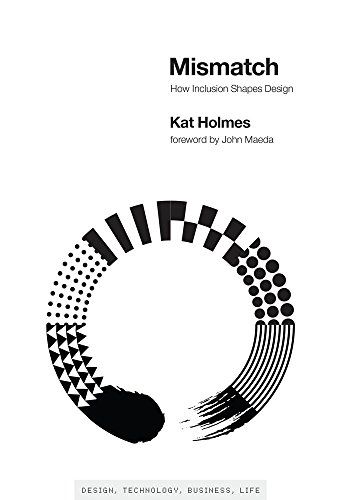
Katie Holmes was the former Director of Inclusive Design at Microsoft who led the company's development Inclusive Design Toolkit. Edited by the IMT press (first in 2018, and then in a new format in 2019), this book brings the question of “what humans exactly are we putting at the center of human-centered design?”
Mismatch presents the concept of Inclusive Design, beyond the notions of accessibility and universal design (“one size fits all”). The book reveals the issue of current user-centered design approaches and uncovers the misconceptions that designers and product owners have about users. Then, it provides suggestions to incorporate Inclusive Design in your product design/development process - highlighting the pitfalls commonly seen when teams try to do Inclusive Design and provide useful insights on how to avoid them.
All these technicalities are carefully presented in the context of the historical, social, political, and emotional impact that exclusion has on humans - and the responsibility (and power) designers have on shaping this. Lastly, one of the richest aspects of the book is how it gathers knowledge from a myriad of other fields: school systems and children development, gaming, architecture, mathematics, air force, anthropology, etc.
Mismatch is, without doubt, an essential reading if you have (or want to have) any leadership role in a design project or team.
3) Captivology: The Science of Capturing Peoples’ Attention - by Ben Parr
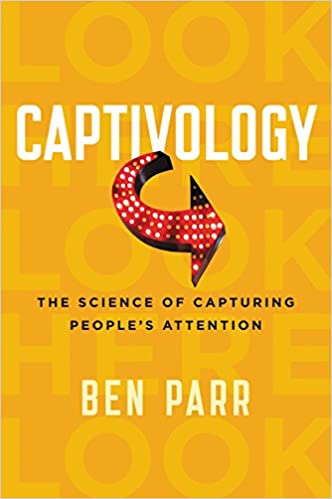
Even though it was launched in 2016, it remains incredibly relevant. In this book, you will find a collection of scientific studies and business cases that provide insight on how to capture users' attention and how to sustain it. By reading it, you will get to know how the human brain works, understanding attention and memory mechanisms.
Captivology presents, in a complete but brief and accessible way, what science knows about attention and memory. Considering that the most part of designers lack training in cognitive science, this is an important reading so you can design in a more science-based approach. The book doesn't present you with straight-forward tips directly translatable in design decisions, but I would say that it's a plus in this case. On one side, the depth of the knowledge covered goes beyond the basic design principles, which allows you to understand the why's of common design best-practices. On another side, the relatively universal and timeless nature of the scientific knowledge presented, paired with the absence of prescribed rules, will provide you with a great basis so you can dare to innovate beyond standard interaction patterns, without risking usability.
4) User friendly: How the hidden rules of design are changing the way we live, work and play - by Cliff Kuang and Robert Fabricant
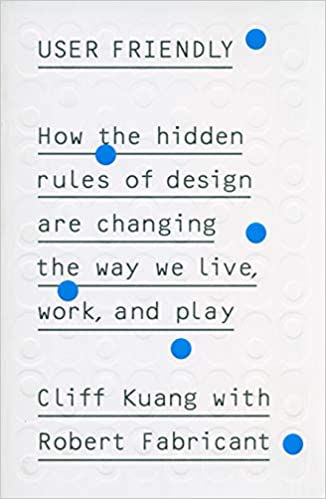
The best way I find to describe User Friendly is as the Sapiens: A Brief History of Humankind for product design. The book presents the history of user-centered design from the beginnings of computer science to nowadays. Considered a successor to Design of Everyday Things, User Friendly figures in Amazon Best Books of 2019 Picks
What distinguishes User Friendly the most from other design books (including the other ones in this list) is its incredible good writing. The book is written in a narrative form with a very clean but somehow poetic style. That makes User Friendly feel much more like a leisure book than a book that you are reading to learn - even though, you will definitely be learning a lot by reading it. The book covers the major world events, people and technology artifacts that brought the user-friendly design to where it is now.
5) Extra Bold: A Feminist, Inclusive, Anti-racist, Nonbinary Field Guide for Graphic Designers - by Ellen Lupton and Jennifer Tobias
Launched in May 2021, Extra Bold is a book that guides designers through inclusive design. It expresses how there is an urge to rethink design principles and practices considering theories of feminism, anti-racism, and nonbinary thinking. Despite the focus on graphic design, this a book for every type of design.
This book results from several interviews, typefaces, sketches, and essays. Plus, it includes diverse projects whose contributors have completely different racial backgrounds, economic statuses, and gender identities. Therefore, Extra Bold is not just a practical handbook on how to put inclusive design into practice but also a combination of stories that encourage the readers to self-reflect and take action through design.In total, seven authors have contributed to this book, including Ellen Lupton, Jennifer Tobias, Josh Halstead, Leslie Xia, Kaleena Sales, Frank Kafei, and Valentina Vergara.
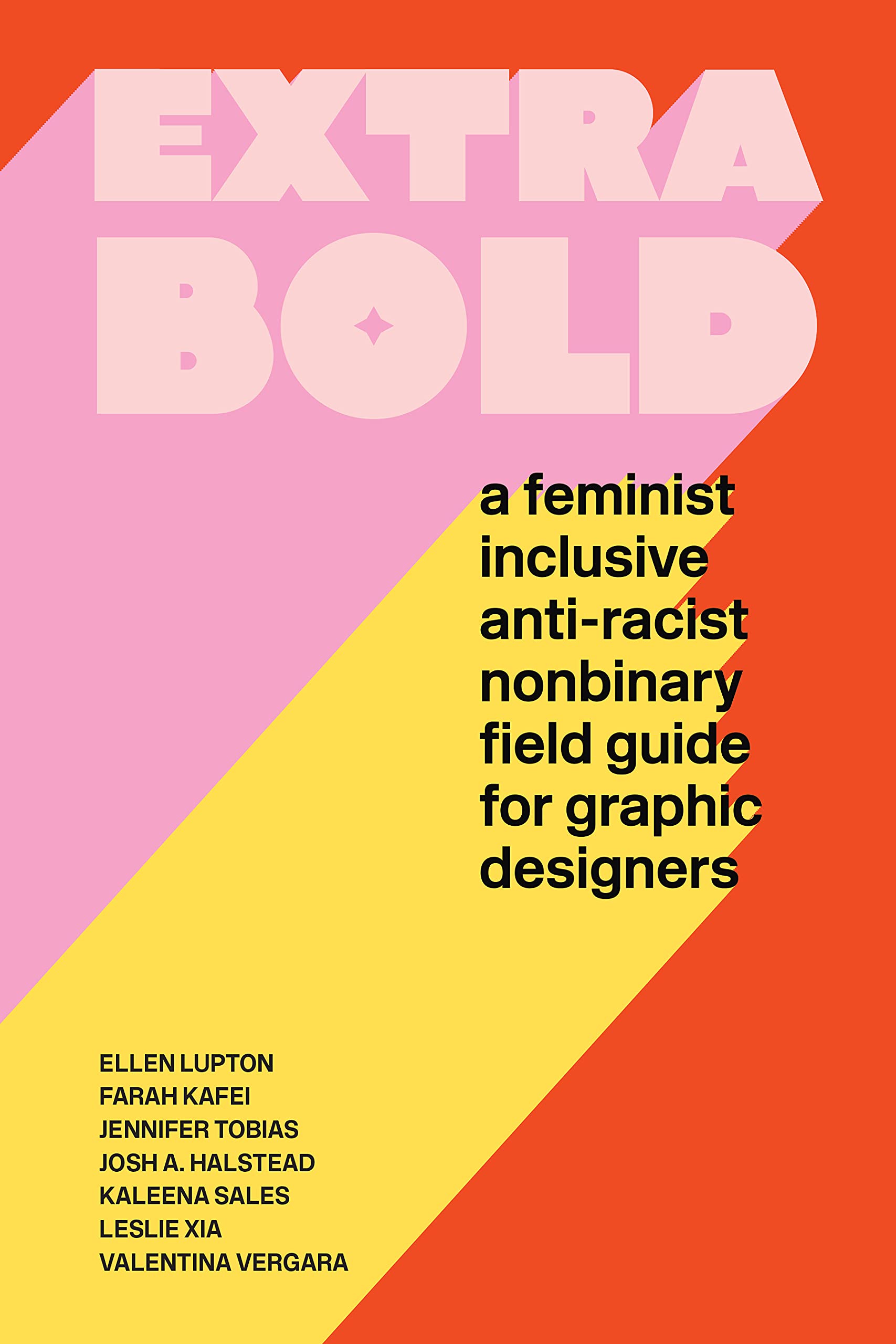
Our own book about product design
Product Design Process
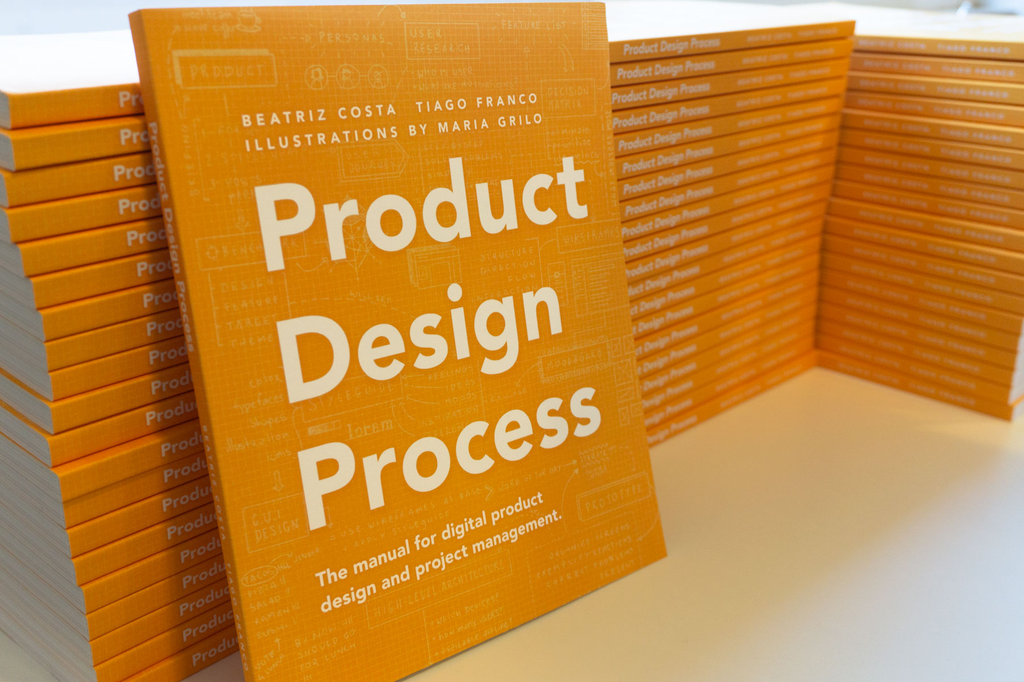
I couldn’t finish this reading list without mentioning the book we wrote at Imaginary Cloud: Product Design Process: The manual for digital product design and project management. The book is great if you are well versed in the existing UX/UI tools (user interviews, focus groups, personas, jobs to be done, user journeys, mood boards, style guides, etc…), but if you struggle on how to move from one step of the design process to the next.
The Product Design Process book will help you select the essential UX/UI design tools, and present you with a straightforward design methodology (using the output of a step as the input of the following one). This will improve your efficiency in two main aspects: on one hand, it will allow you to create a seamless workflow, relying less on bursts of creativity. On the other hand, it will make design approvals easier by providing a clearer link between research data and design decisions.
Finding time to complement our work experience with valuable readings can make a huge impact on our performance as designers. So, which book are you going to read first?
Found this article useful? You might like these ones too!


